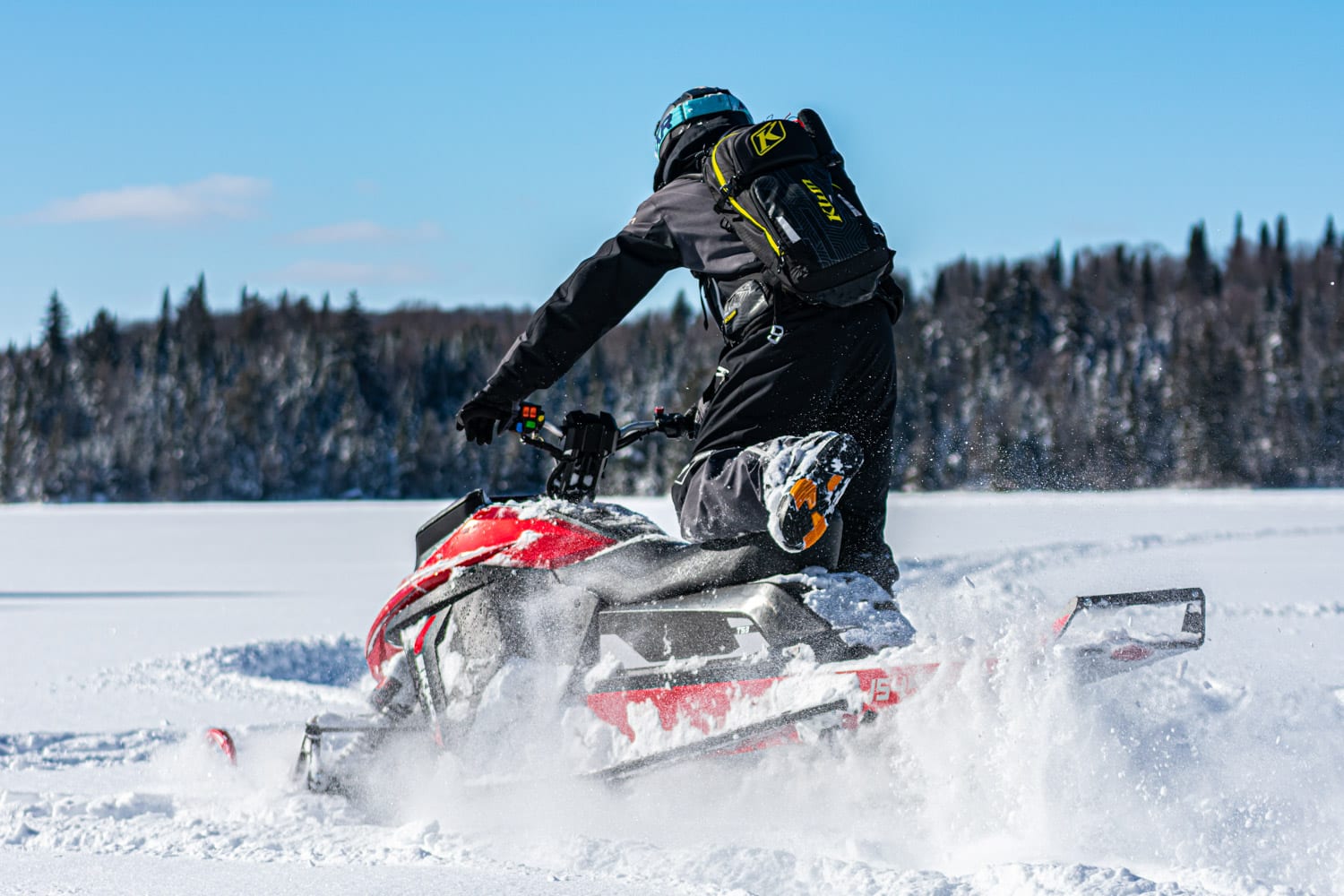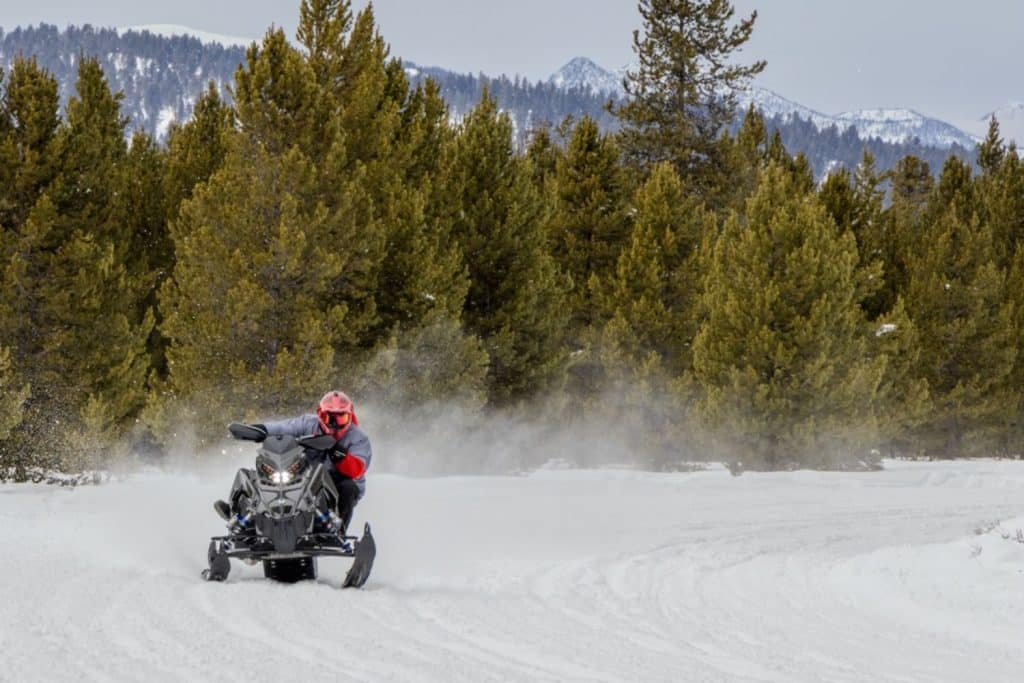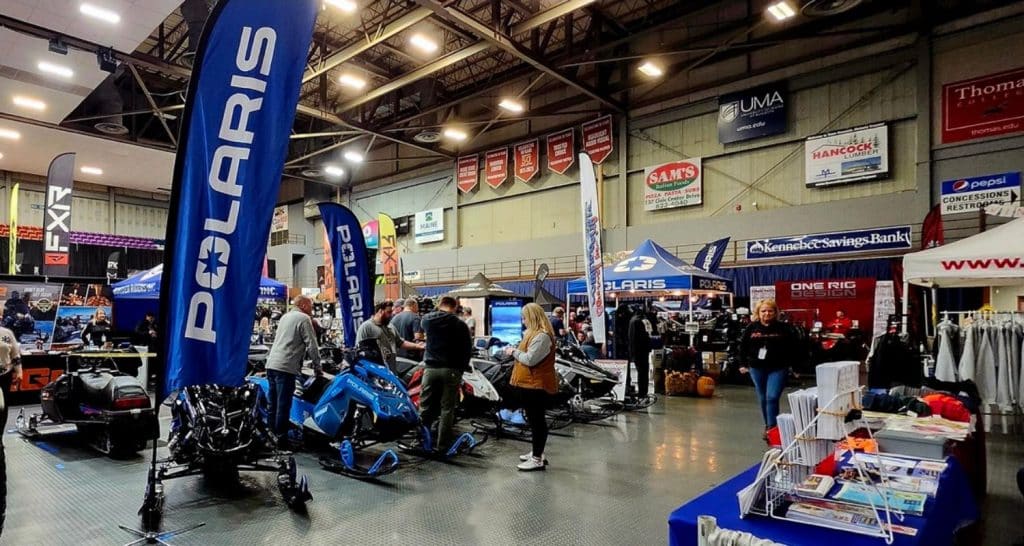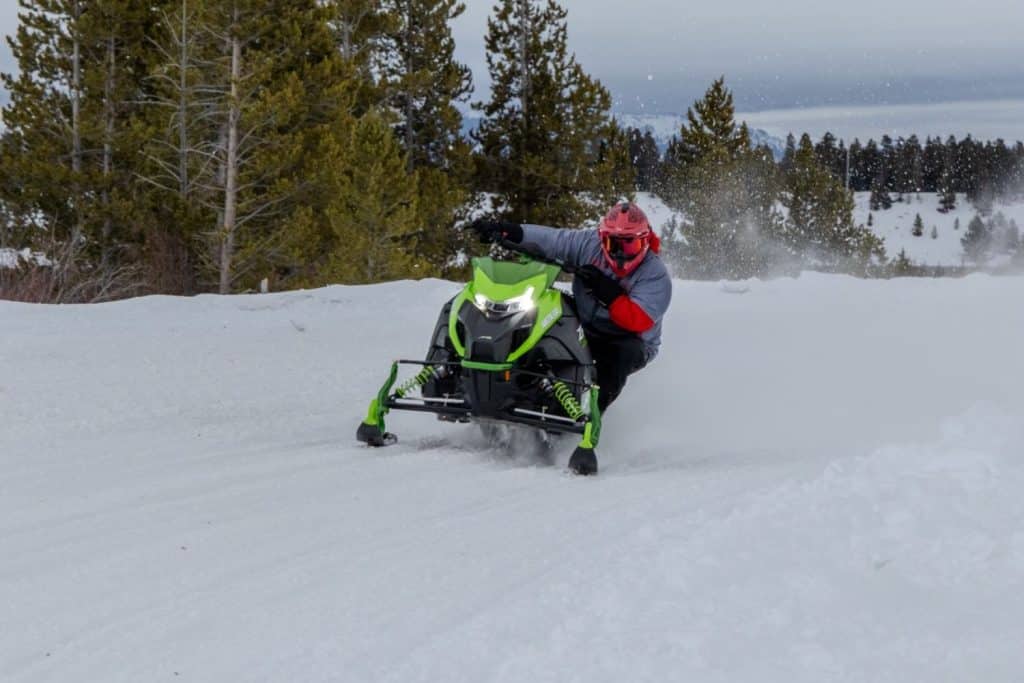With the advent of electric cars on the road in recent years, it was only a matter of time before the first electrically snowmobile was offered. We only have to look at the big players in the automotive industry to realize that electric vehicles are not a passing fad and that this type of motorization is here to stay. Even the iconic Harley-Davidson, the ultimate symbol of gasoline-powered motorcycles, is following the wave and now offers electric motorcycles. Those who didn’t make the switch in time are now in catch-up mode.
As far as off-road recreational vehicles are concerned, there have been a few timid attempts by some manufacturers, especially on the ATV side. But, despite interesting technologies, the proposed electric machines were more or less well adapted to the current market and their success was, let’s face it, rather limited.
Following these failures, one could deduce that electric snowmobiles are not for tomorrow. Well, think again!
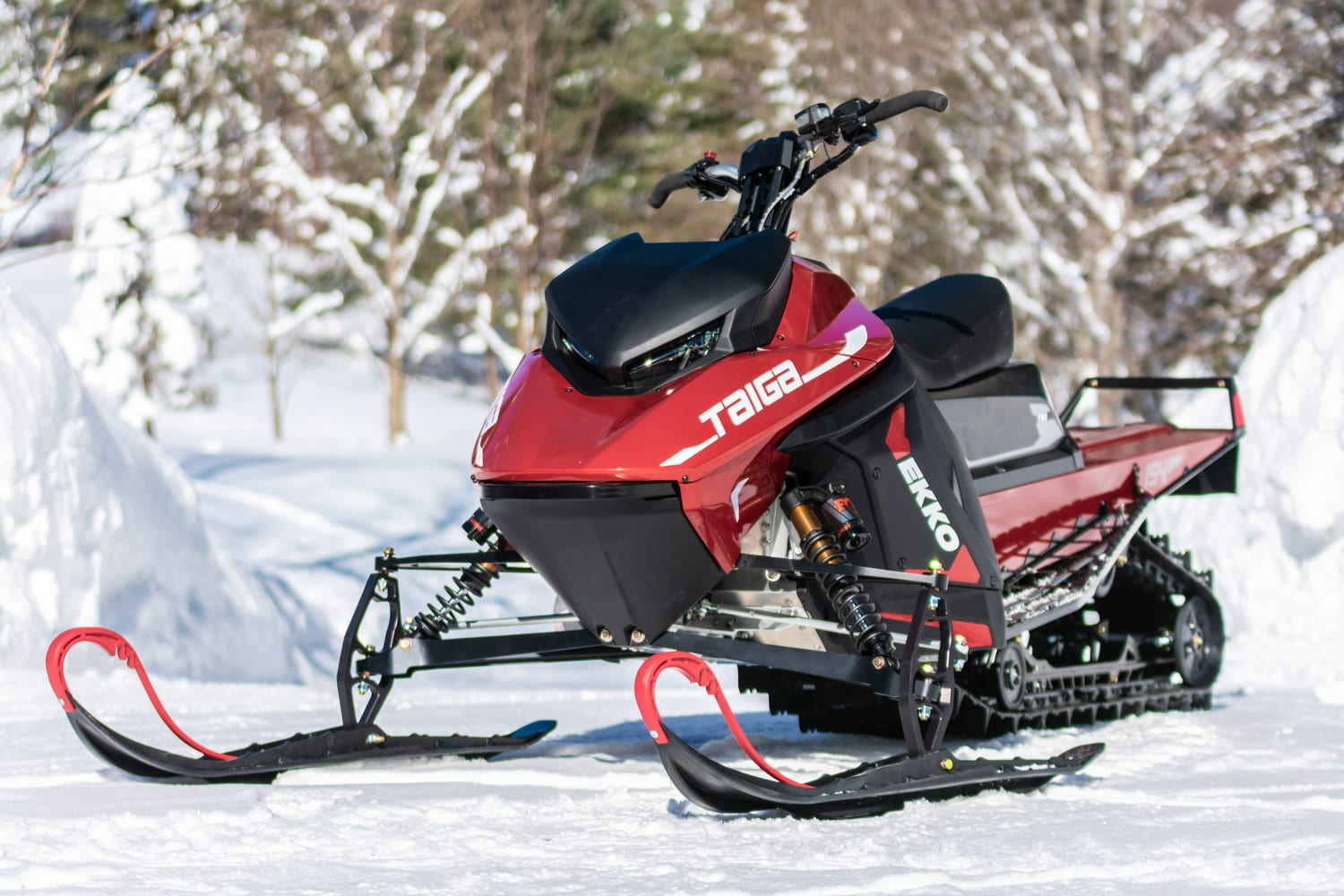
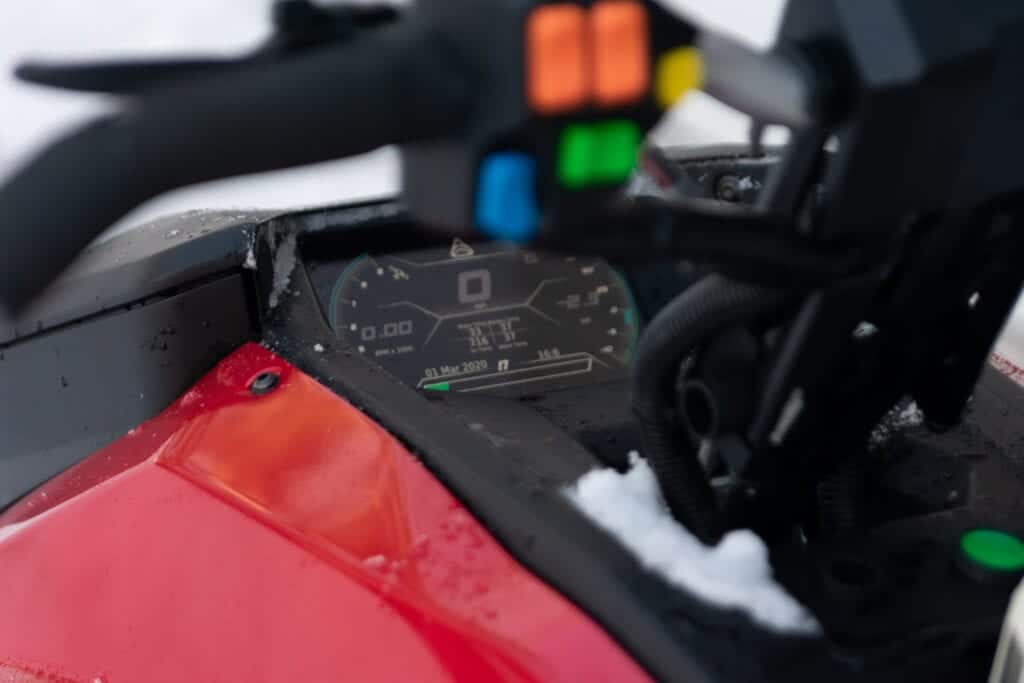
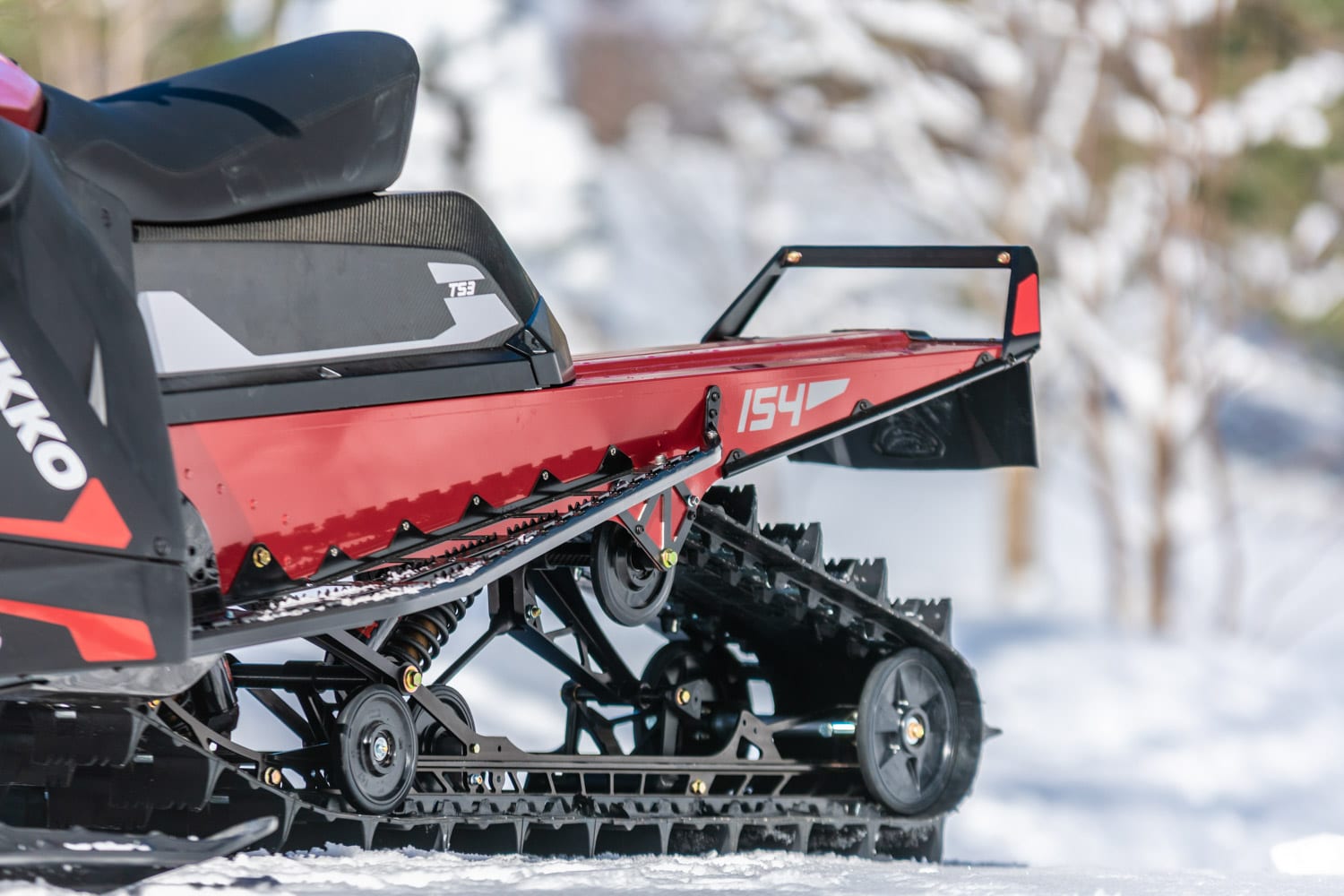
My country is winter
Quebec is the land of winter and snowmobiles. It is here that this type of vehicle, as we know it today, was created and improved. Bombardier (now BRP) is a perfect example of a company that has bet on winter: founded in the 1940s, its mission was to create a vehicle that could travel in winter as easily as it could in summer. It’s safe to say it’s mission accomplished.
Quebec is also the land of electricity. Rain or shine, whatever the season, Quebec enjoys a clean energy, electric energy, which is produced in abundance and at an unbeatable cost.
Finally, we can add the fact that Quebecers “taste” winter almost 6 months a year, so it’s not surprising that the electric snowmobile was born in Quebec.
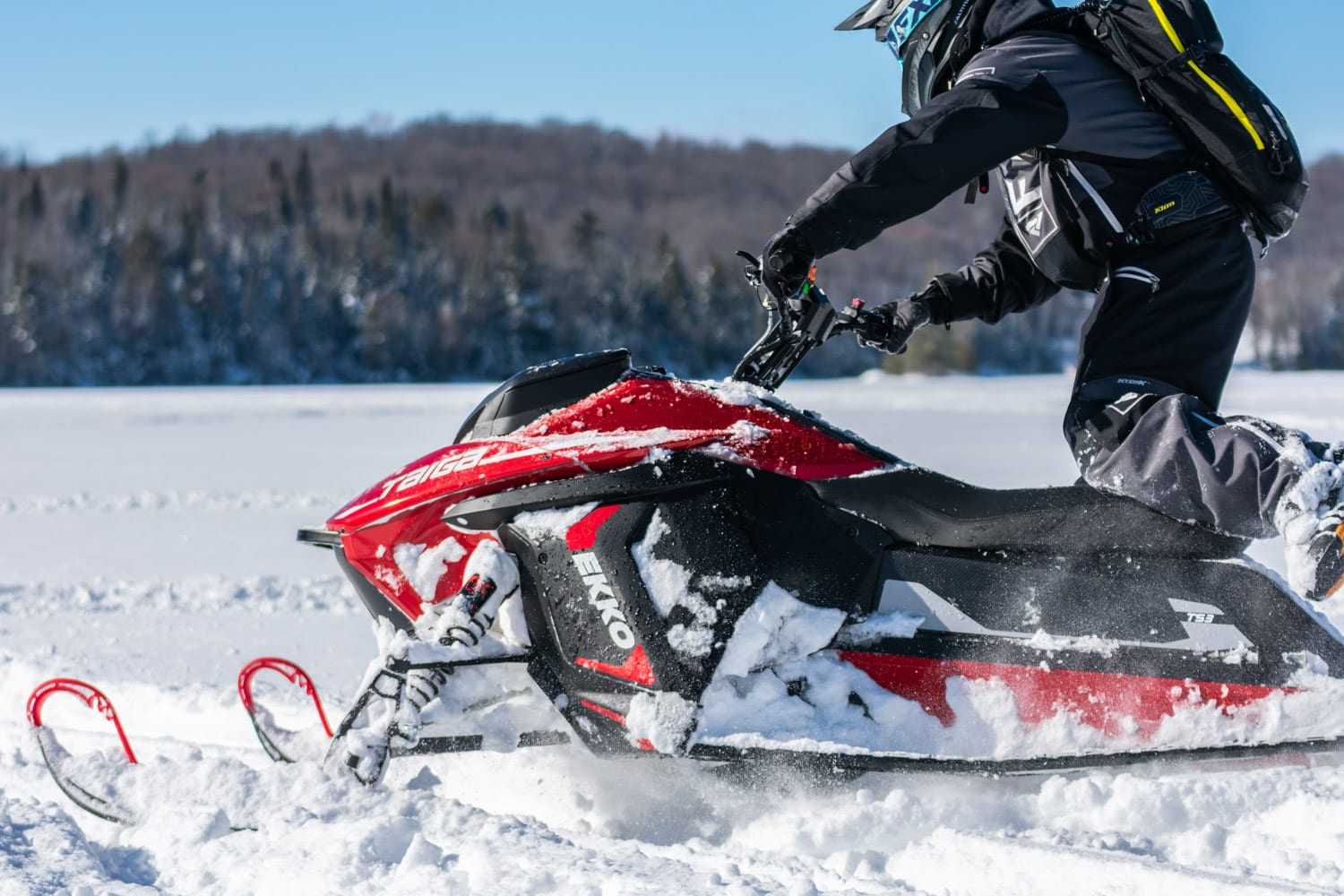
A newcomer in the big league
Founded in 2015, Taiga Motors is a young Quebec company with the ambition to create an environmentally friendly electric snowmobile without compromising on performance. It all started in 2011 when Samuel Bruneau, Paul Achard and Gabriel Bernatchez, then engineering students at McGill University in Montreal, were working on a project to convert a gasoline-powered snowmobile to electric power.
As mentioned above, times change and so do markets. One thing led to another and they created their company. A study showed them the viability of the project, mainly to fill an urgent need for national parks (some of them prohibit noisy and polluting snowmobiles) and ski resorts that would like to benefit from clean and silent vehicles for their operations. It is a matter of demonstrating to their customers that they are making every effort to be greener.
The first steps
A first prototype of an electric snowmobile is built by the three former students who are now engineers. The project aroused a growing interest with requests from all over the world. But the young company was not yet ready to commercialize its product and wanted to pursue its development.
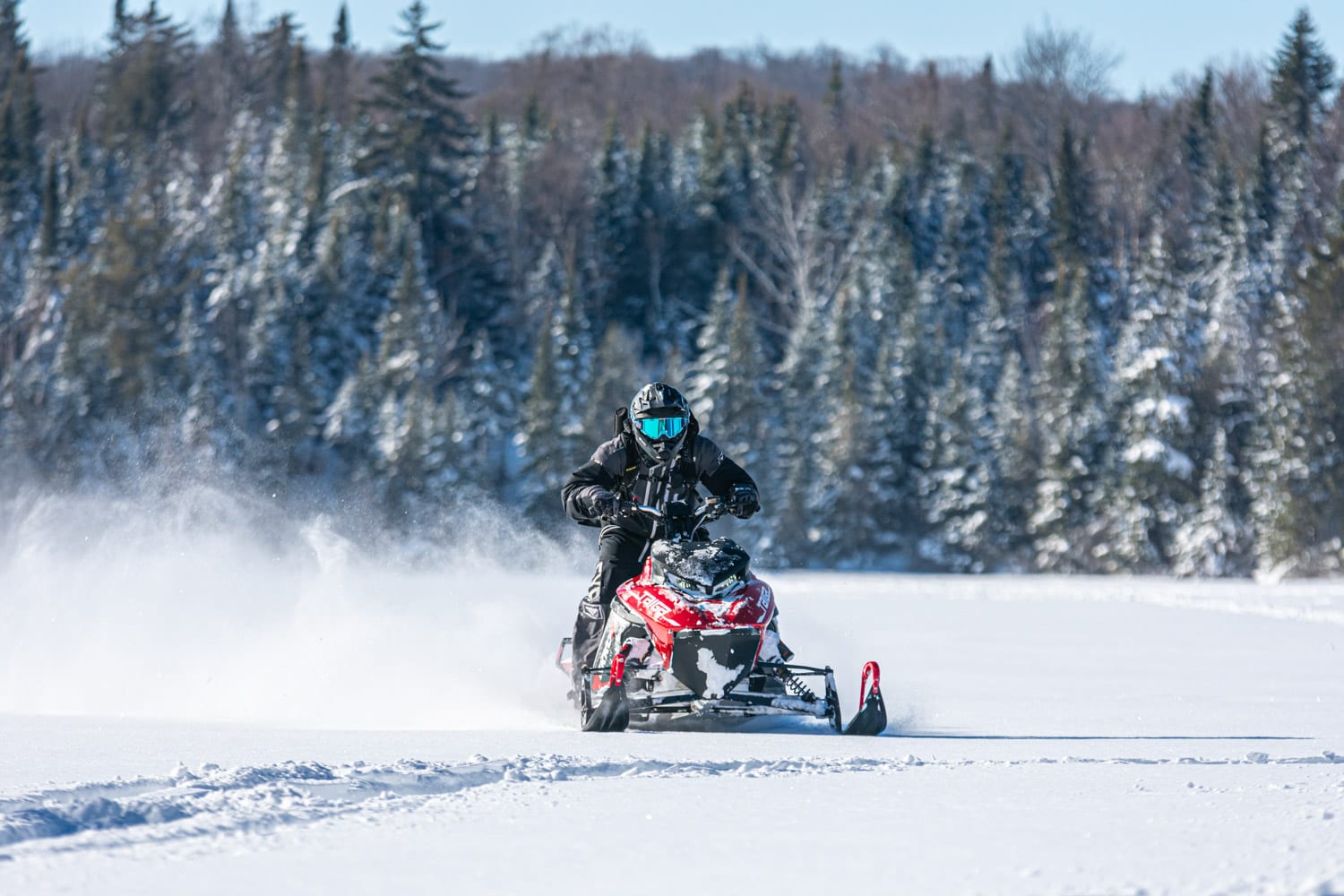
In 2017, Taiga partnered with Whistler Blackcomb and Canadian Wilderness Adventures in British Columbia to conduct real-world testing. Despite fairly high expectations from the testers, the results were successful and these tests provided important data for Taiga Motors to continue improving the product.
In the spring of 2018, Taiga Motors unveiled its TS2 (Taiga Snow 2) model, the prototype of a snowmobile that was completely thought out and designed from scratch. Already the specifications are impressive:
TS2 Summary Specifications
- 120 horsepower permanent magnet electric motor
- Weighs approximately 226 kg (500 lb)
- 0-100 km in 3 seconds
- 20 kWh Lithium-ion battery
- Range of approximately 100 km (62 miles) depending on conditions
- Integrated Wi-Fi and GPS connectivity
- Charging on 120 vac, 240 vac or BRCC (rapid direct current)
Several TS2s will be produced and used mainly by national parks and ski resorts.
TS3 models – A giant step forward
Two years later, in March 2020, in the middle of the first wave of Covid-19, the young company unveiled its latest generation of snowmobiles, the Taiga TS3. This time around, we are offered not one but three snowmobiles: the Atlas crossover, the Nomad utility and the Ekko mountain bike.
Many improvements have been made to the TS3 compared to the TS2 prototype. Let’s take the time to discover these little wonders.
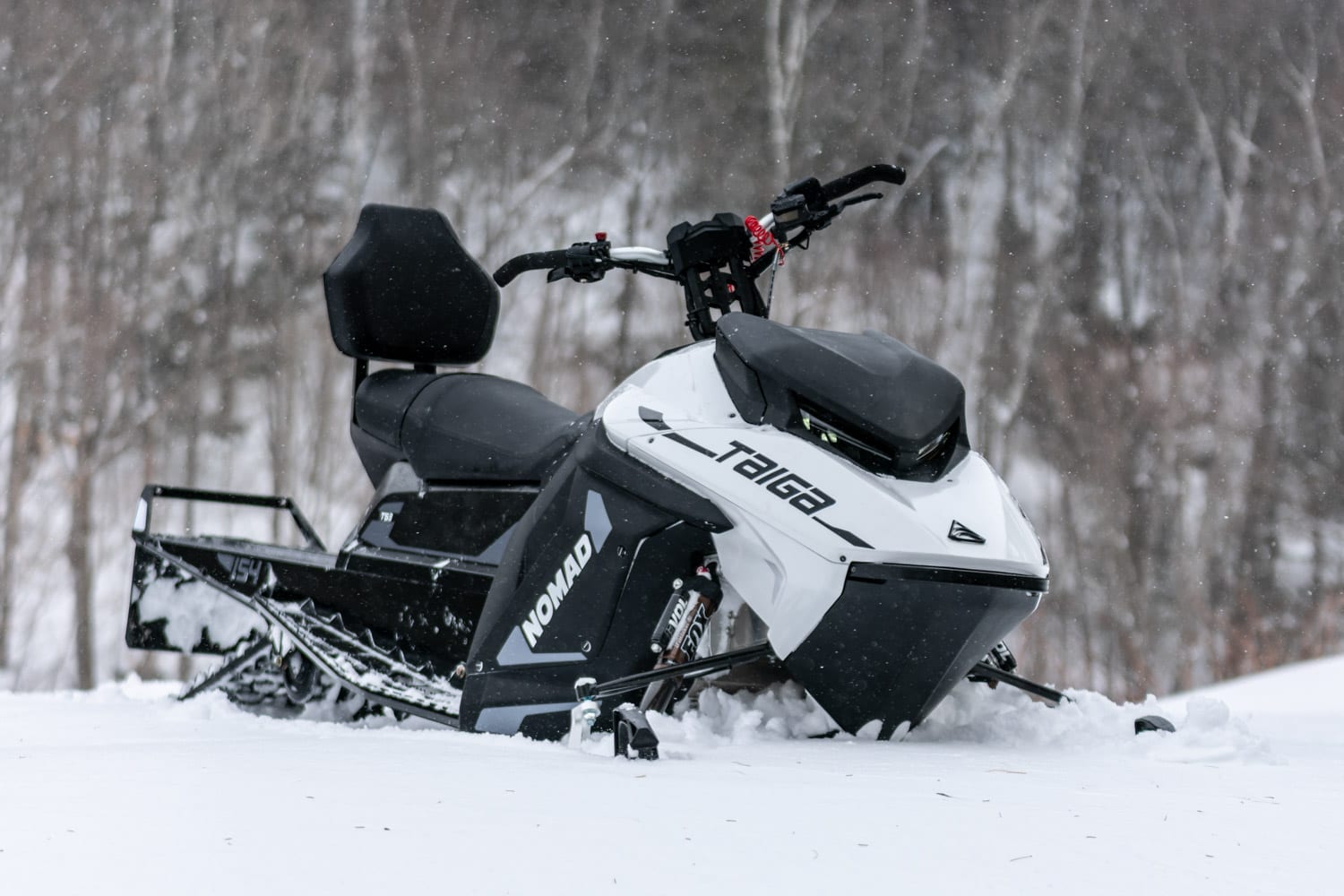
Body, chassis and ergonomics
At first glance, the bodywork has been redesigned and now has a sleeker look. A reduction of the chassis dimensions by about 20% compared to the TS2 allows for more knee room and a more forward seating position.
Each TS3 model is developed around the evolving chassis/powertrain platform called RADIX, which is entirely designed by Taiga. The battery pack is meticulously integrated into the chassis, allowing for a reduction in components, a compact shape and a great reduction in weight. This innovative approach also allows for greater chassis rigidity and ideal positioning of the center of gravity to create improved driving dynamics.
Suspension
The specific suspensions for each model have been designed by Taiga considering the RADIX platform, the intended use and the type of riding in order to obtain optimal handling in each segment. The steering has been optimized for each model to provide absolute control and ideal feedback to the rider.
The double-wishbone front suspension is constructed entirely of aluminum to help reduce weight while achieving excellent rigidity; it offers 8.66″ to 9.5″ of travel (220 mm to 240 mm) depending on the model.
The rear suspension is constructed of aluminum and carbon fiber to minimize weight and maximize efficiency. It is a multilink suspension with a travel of 10.6″ to 11.8″ (270 mm to 300 mm) depending on the model.
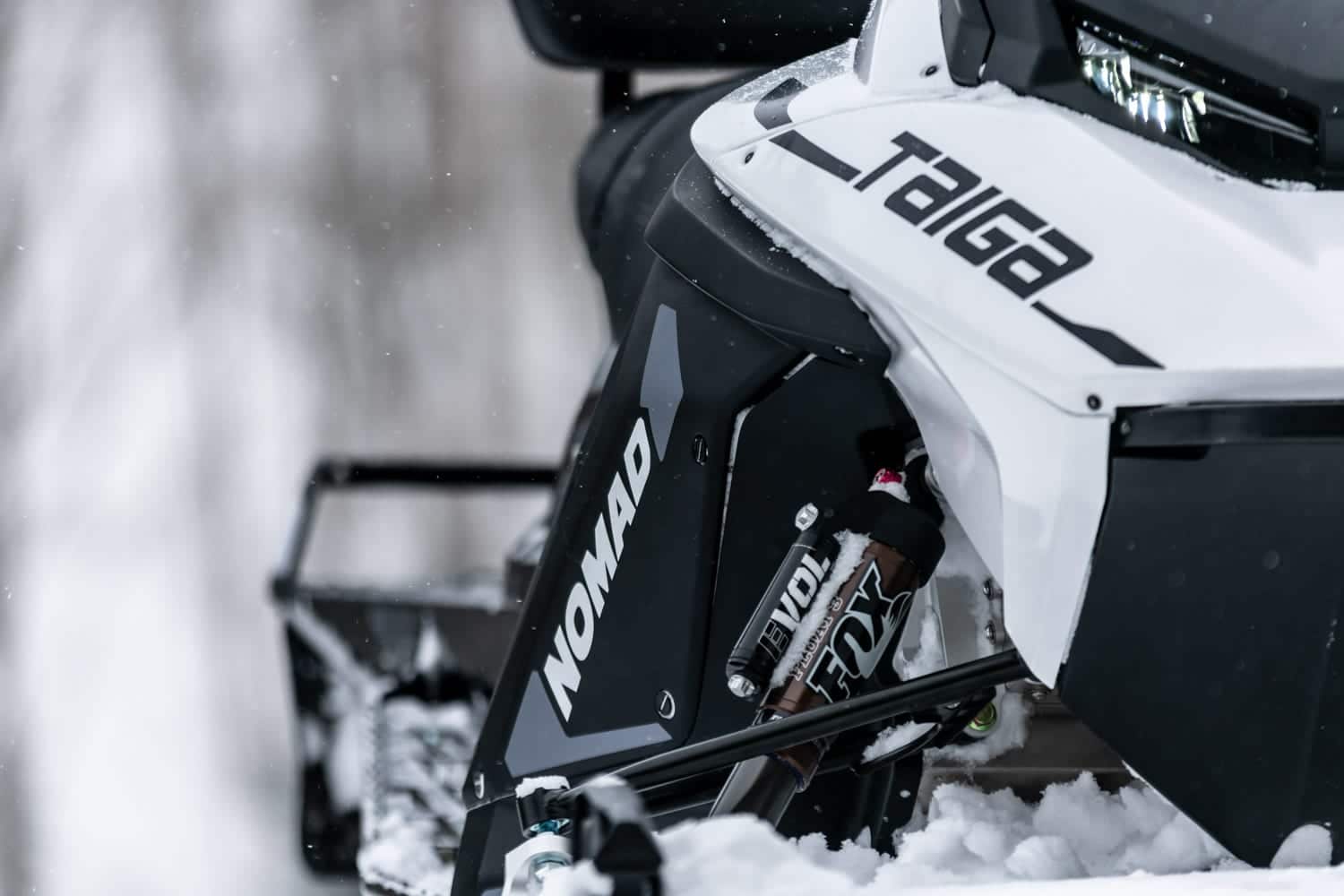
Motorization and performance
Taiga’s goal is to produce electric snowmobiles that do not compromise on performance. To achieve this goal, it relies on an electric motor that surpasses the performance of the best gasoline engines.
One of the great advantages of electric drive is that maximum torque is always available at the output, regardless of the engine speed (0 – 9000 rpm). This allows the motor to be coupled directly to the track with a toothed belt and eliminates clutch systems. No CVT clutch or gear transmission, reducing weight and power loss through friction. You vary the speed of the engine to vary the speed of the track, period. It also allows to create a very efficient engine-brake system whose rate is variable by the pilot, while recovering the braking energy to recharge the battery (regeneration)
The low mass of the electric drivetrain allows Taiga snowmobiles to achieve top-notch power-to-weight ratios, offering up to 180 hp at a weight of less than 534 lb (242 kg) for performance models. It should also be noted that the electric motor is not affected by altitude or temperature, which is a significant advantage over gasoline engines.
Finally, this type of motorization does not emit any polluting emissions and is almost silent (only the noise of the caterpillar is perceptible), which really contrasts with the usual gasoline machines.
Each TS3 model is available in two engine options – standard or performance – offering a choice of 90 hp or 120 hp for the Nomad, and 120 hp or 180 hp for the Atlas and Ekko.
The Atlas crossover can reach a top speed of 160 km / h (100 mph). The Nomad and Ekko have more low-end torque and can reach a top speed of 120 km/h (75 mph).
As for response and acceleration time, the top-of-the-line (performance) models can reach 0-100 km / h in less than 3 seconds. Not easy to beat …
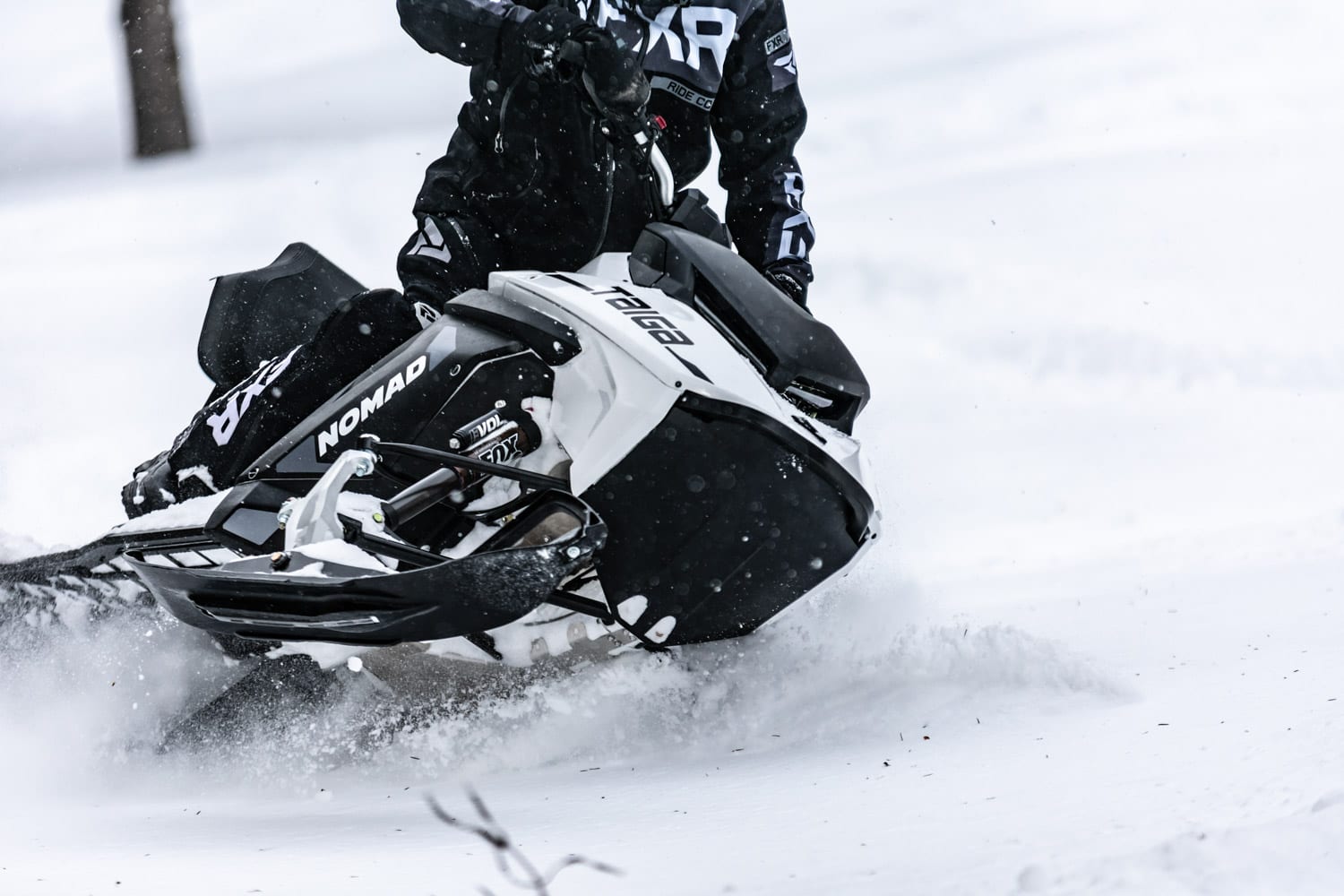
Battery, charging system and autonomy
In order to achieve the desired levels of performance, range and handling, great care was taken in the design of the battery, particularly its weight, distribution and integration into the chassis. It could not be otherwise as the battery accounts for a large fraction of the vehicle’s weight. With this in mind, Taiga has managed to increase the density of the battery by 30%. In other words, the same battery now takes up much less space and is 30% lighter.
For comparison, a 28 kWh automotive battery has the same weight as a complete Taiga Atlas snowmobile with its 27 kWh battery.
The standard TS3 models have a range of about 100 km while the performance versions will provide about 140 km of fun on a full charge. This may not sound like much, but let’s not forget that Taiga’s current target markets are ski resort operators and tourist sites.
The TS3 snowmobiles are equipped with an on-board charger that recharges the battery from standard 120v or 240v power in approximately 10 hours and 2 hours respectively. The charging plug conforms to the J1772 industry standard and is therefore compatible with existing charging stations. Finally, it is possible to recharge the battery much faster, about 20 minutes, using the optional DC fast charging port.
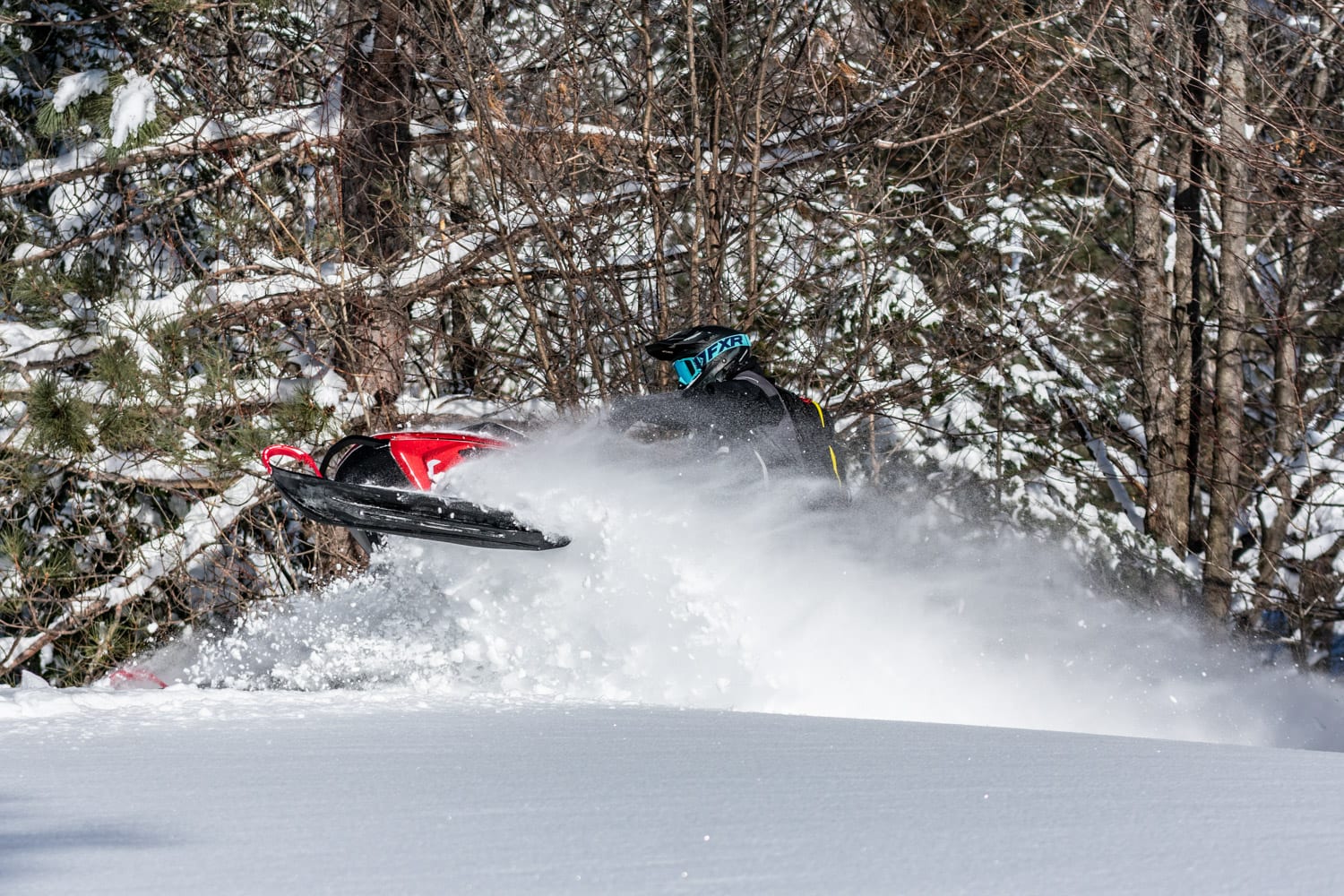
But what else?
The simplicity of the mechanics, the reliability and the minimal maintenance required also mean minimal operating costs. And that’s not counting the savings on fuel.
In fact, no powertrain maintenance is required. No air filter, oil, spark plugs or CVT clutch, so there are fewer trips to the garage and more time to have fun. Taiga is so convinced of this that it offers a 20,000 km / 5 year warranty on the powertrain, which includes the battery. That’s unheard of.
Taiga TS3s are little marvels of technology. All electronic systems and on-board computers are designed and programmed by Taiga. This allows them to offer remote diagnostics and real-time updates (Wi-Fi access required), to include interesting features such as integrated GPS, programmable control of driving parameters with speed, torque, power limitation, battery management system, etc.
Taiga has also maintained the compatibility of its snowmobiles with a wide range of aftermarket components to allow for easier customization. Space has even been freed up in the front, under the hood where the gas engine is usually located, and is now dedicated to a 30-liter storage box.
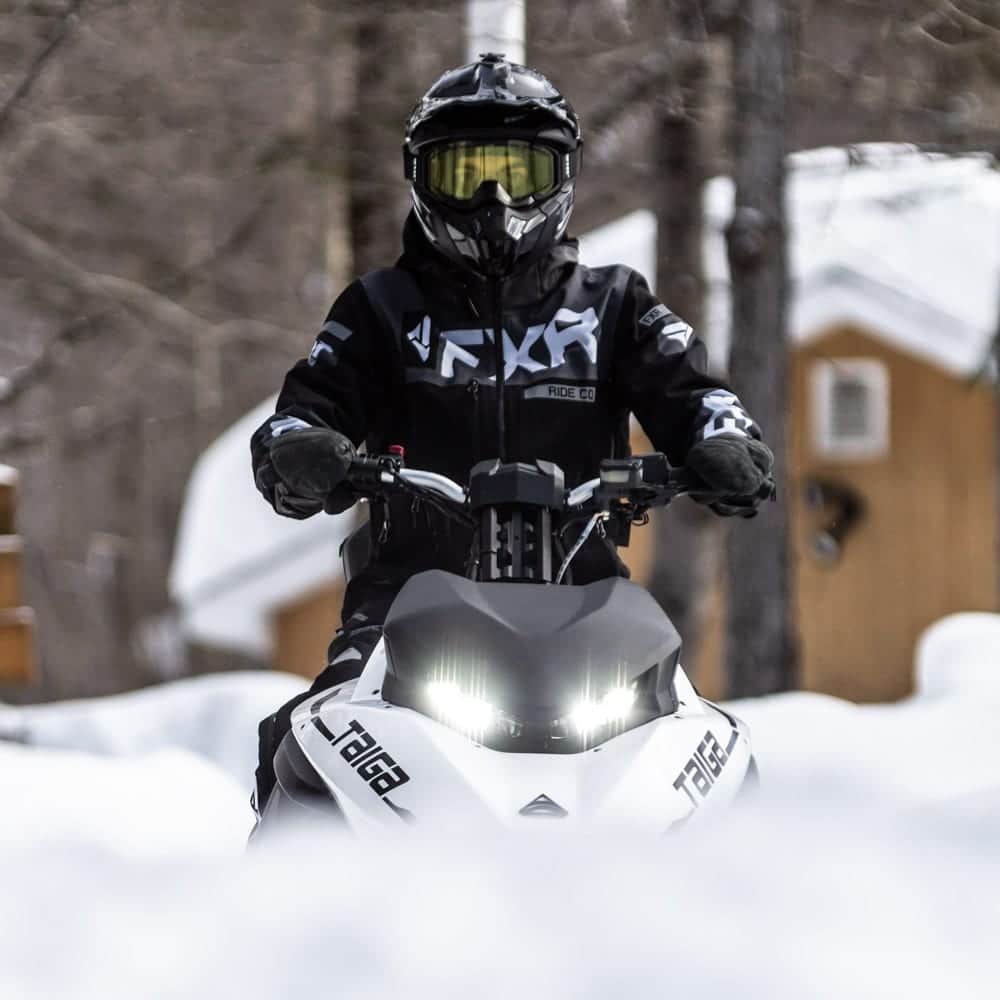
Purchase and service
Taiga is currently in the process of selecting its dealers and its snowmobiles are available in North America and Europe. The Taiga TS3 Atlas, TS3 Nomad and TS3 Ekko can be ordered online, as a reservation with a $500 refundable deposit. MSRPs for each model will be released shortly and will start at $15,000 USD ($20,000 CAD). First deliveries are scheduled for late 2020. www.taigamotors.ca
What we think
Even though we haven’t had a chance to try it out yet (we’ll get back to you soon), it’s always a pleasure to welcome a new player in the industry, especially when it stands out from the rest. And Taiga Motors stands out in my opinion.
Taiga has done its homework and demonstrated an incredible capacity for innovation and product development by offering three new snowmobiles in record time. The products offered are attractive, offer innovative features and performance that would make some people blush: 180 horsepower, 0-100 km/h in 3 seconds, 5-year / 20,000 km warranty, zero maintenance, zero smoke and almost zero noise! Wow!
But despite these impressive characteristics, a range of 100 km or even 140 km greatly reduces the possibilities for long-distance hikers or off-road adventure enthusiasts. However, with the speed at which battery technology is evolving, we are confident that Taiga will soon overcome this problem.
We can only rejoice at the arrival of Taiga Motors in the world of snowmobiling. Times are changing and so are mentalities, and whether we like it or not, this industry is called upon to transform itself in order to be accepted like in the good old days. The electric snowmobile is a great solution and shows a lot of potential.
Are the Taiga TS3 snowmobiles for all types of enthusiasts? No. But ski resorts, tourist sites and new enthusiasts who will be doing short rides will find them to be a good fit, especially considering the easy maintenance and low operating costs of these snowmobiles.
And there is something that tells me that the fans of acceleration races will be interested …
SPECIFICATIONS
| Engine |
| Permanent magnet electric |
| AtlasStandard 120 hp |
| Atlas Performance 180 hp |
| Ekko Standard 120 hp |
| Ekko Performance 180 hp |
| Nomad Standard 90 hp |
| Nomad Performance 120 hp |
| Autonomy |
| Atlas Standard 103 km |
| Atlas Performance 140 km |
| Ekko Standard 98 km |
| Ekko Performance 131 km |
| Nomad Standard 100 km |
| Nomad Performance 134 km |
| 0-100 km/h |
| Atlas Standard 3.7 sec |
| Atlas Performance 2.9 sec |
| Ekko Standard 4.1 sec |
| Ekko Performance 3.3 sec |
| Towing |
| Nomad Standard 350 kg (770 lb) |
| Nomad Performance 510 kg (1124 lb) |
| Suspension |
| Front : aluminum double wishbone |
| Rear : multilink aluminium et fibre carbone |
| Clearance Atlas Front : 9.05 in (230 mm) |
| Atlas Rear : 11.8 in (300 mm) |
| Ekko Front : 8.66 in (220 mm) |
| Ekko Rear : 10.6 in (270 mm) |
| Nomad Front : 8.82 in (224 mm) |
| Nomad Rear : 11.08 in (300 mm) |
| Transmission |
| Direct by composite belt |
| Ski spacing |
| Atlas 42.3 in (1074 mm) |
| Ekko 37.4 in (950 mm) |
| Nomad 42.3 in (1074 mm) |
| Brakes |
| Hayes disc with variable battery regeneration system |
| Weight (ready to roll) |
| Atlas Standard : 247 kg (544 lb) |
| Atlas Performance : 271 kg (577 lb) |
| Ekko Standard : 242 kg (534 lb) |
| Ekko Performance : 266 kg (586 lb) |
| Nomad Standard : 247 kg (544 lb) |
| Nomad Performance : 271 kg (577 lb) |
| Caterpillar |
| Atlas 137 x 15 x 1.6 in |
| Ekko 154 x 15 x 2.5 in |
| Ekko165 x 15 x 2.5 in |
| Nomad Standard : 247 kg (544 lb) |
| Nomad Performance : 271 kg (577 lb) |
| Dimensions |
| Atlas 50.3 x 124.3 in (1278 mm x 3158 mm) |
| Ekko 58.2 x 138.3 in (1482 mm x 3360 mm) |
| Nomad 61.0 x 128.9 in (1550 mm x 3275 mm) |
Source: www.taigamotors.ca
Pictures : Gracieuseté Taiga Motors

